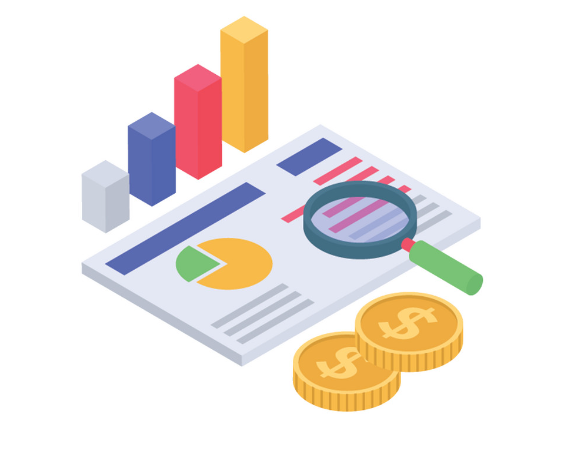Financial Metrics for Measuring Business Success
Beyond profit and loss: A comprehensive approach to financial performance measurement
Why Financial Metrics Matter
In today's complex business environment, relying solely on intuition or basic profit numbers is insufficient for measuring true business success. Financial metrics provide objective, quantifiable measures that allow business leaders to assess performance, identify trends, and make data-driven decisions.
When properly implemented, a comprehensive financial metrics framework enables organizations to:
- Identify early warning signs of potential challenges
- Evaluate the effectiveness of business strategies
- Allocate resources more efficiently
- Compare performance against industry benchmarks
- Communicate value to stakeholders and investors
Core Profitability Metrics
Gross Profit Margin
This metric reveals how efficiently a company produces its goods or services by measuring the percentage of revenue that exceeds the cost of goods sold (COGS).
Formula: (Revenue - COGS) / Revenue × 100%
A higher gross profit margin indicates better efficiency in core operations.
Operating Profit Margin
This metric shows the percentage of revenue that remains after accounting for both COGS and operating expenses, revealing operational efficiency.
Formula: Operating Profit / Revenue × 100%
Tracks how well a company manages its operations and overhead costs.
Net Profit Margin
The ultimate bottom-line metric that shows what percentage of revenue is converted to profit after all expenses, taxes, and costs are deducted.
Formula: Net Profit / Revenue × 100%
A comprehensive indicator of overall profitability and pricing strategy effectiveness.
EBITDA Margin
Earnings Before Interest, Taxes, Depreciation, and Amortization provides insight into operational performance without the influence of accounting and financial decisions.
Formula: EBITDA / Revenue × 100%
Useful for comparing companies with different capital structures or tax situations.
Liquidity and Cash Flow Metrics
Profitability alone doesn't ensure business survival. Cash flow and liquidity metrics assess a company's ability to meet its short-term obligations and manage working capital effectively.
Current Ratio
Measures a company's ability to pay short-term obligations within a year.
Formula: Current Assets / Current Liabilities
A ratio above 1 indicates that a company can cover its short-term liabilities with its short-term assets. Most industries target a range of 1.5-3.0.
Quick Ratio (Acid-Test Ratio)
A more stringent measure of liquidity that excludes inventory from current assets.
Formula: (Current Assets - Inventory) / Current Liabilities
Indicates ability to meet short-term obligations without relying on inventory sales.
Operating Cash Flow Ratio
Indicates how well a company can cover its current liabilities with the cash flow generated from operations.
Formula: Operating Cash Flow / Current Liabilities
A higher ratio suggests stronger financial health and cash-generating ability.
Cash Conversion Cycle
Measures how quickly a company can convert its investments in inventory and other resources into cash flows from sales.
Formula: DIO + DSO - DPO
Where DIO = Days Inventory Outstanding, DSO = Days Sales Outstanding, DPO = Days Payables Outstanding
A shorter cycle indicates better cash flow management.
Efficiency and Performance Metrics
Beyond profitability and liquidity, businesses need to measure how efficiently they utilize their resources and assets to generate returns.
Return on Assets (ROA)
Measures how efficiently a company is using its assets to generate profit.
Formula: Net Income / Total Assets × 100%
Higher ROA values indicate better asset utilization. Industry benchmarks vary significantly.
Return on Equity (ROE)
Measures how effectively a company is using its equity investment to generate profits.
Formula: Net Income / Shareholders' Equity × 100%
Higher ROE values indicate better returns for shareholders.
Return on Invested Capital (ROIC)
Measures how efficiently a company uses all capital—both debt and equity—to generate returns.
Formula: (Net Income - Dividends) / Total Capital × 100%
ROIC should exceed the company's cost of capital to create value.
Asset Turnover Ratio
Measures how efficiently a company is using its assets to generate revenue.
Formula: Net Sales / Average Total Assets
Higher ratios indicate more efficient asset utilization to generate sales.
Growth and Valuation Metrics
Revenue Growth Rate
Measures the percentage increase in revenue over a specific period.
Formula: ((Current Period Revenue - Previous Period Revenue) / Previous Period Revenue) × 100%
Consistent revenue growth is a key indicator of business sustainability and market success.
Earnings Per Share (EPS)
Measures the portion of a company's profit allocated to each outstanding share of common stock.
Formula: (Net Income - Preferred Dividends) / Average Outstanding Common Shares
A key metric for investors evaluating stock value and comparing companies.
Price-to-Earnings Ratio (P/E)
Measures the current share price relative to its per-share earnings.
Formula: Market Value per Share / Earnings per Share
Indicates how much investors are willing to pay for each dollar of earnings.
Economic Value Added (EVA)
Measures the economic profit a company generates after accounting for all costs of capital.
Formula: NOPAT - (Capital × Cost of Capital)
Where NOPAT = Net Operating Profit After Taxes
Positive EVA indicates value creation for shareholders.
Modern Business Metrics
Today's business environment requires looking beyond traditional financial metrics to capture the full picture of business performance.
Customer Acquisition Cost (CAC)
Measures the cost to acquire a new customer, including marketing and sales expenses.
Why it matters: Helps evaluate marketing efficiency and sustainable growth potential.
Customer Lifetime Value (CLV)
Measures the total revenue a business can expect from a single customer throughout their relationship.
Why it matters: When compared with CAC, it indicates sustainability of business model.
Monthly Recurring Revenue (MRR)
Measures predictable revenue generated each month, critical for subscription businesses.
Why it matters: Indicates stability, predictability, and growth trajectory.
Customer Churn Rate
Measures the percentage of customers who stop using a company's products or services over a given period.
Why it matters: High churn rates indicate customer dissatisfaction and threaten long-term viability.
Implementing a Balanced Metrics Framework
While individual metrics provide valuable insights, the most effective approach is to implement a balanced framework that:
- ✓ Combines financial and operational metrics
- ✓ Includes leading and lagging indicators
- ✓ Aligns with company strategy and objectives
- ✓ Provides actionable insights for decision-making
- ✓ Is regularly reviewed and adjusted as needed
Frameworks like the Balanced Scorecard or OKRs (Objectives and Key Results) can help structure and organize metrics in a way that drives strategic alignment.
Conclusion
Financial metrics are powerful tools for measuring business success, but they must be:
- Relevant to your specific industry and business model
- Consistently tracked and analyzed over time
- Compared against appropriate benchmarks
- Interpreted in the context of broader business goals
- Used to inform strategic decisions, not just review past performance
By implementing a comprehensive metrics framework that balances short-term performance with long-term value creation, businesses can navigate complexity, adapt to changing market conditions, and build sustainable success.
FAQ: Financial Metrics for Business Success
How often should businesses review financial metrics?
Different metrics have different optimal review frequencies. Daily cash metrics, weekly operational metrics, monthly profitability metrics, and quarterly strategic metrics create a balanced cadence.
Are different metrics more important for different types of businesses?
Yes. SaaS companies might prioritize MRR and churn, retail businesses may focus on inventory turnover and gross margin, while manufacturing might emphasize operational efficiency metrics.
How many metrics should a business track?
Focus on quality over quantity. Most businesses benefit from tracking 5-10 key metrics closely rather than spreading attention across dozens of indicators.
How can small businesses implement financial metrics without sophisticated systems?
Start simple with spreadsheets tracking core metrics like cash flow, gross margin, and customer acquisition costs. As the business grows, gradually implement more sophisticated tracking systems.
How do financial metrics tie into non-financial goals like sustainability or employee satisfaction?
Forward-thinking businesses develop metrics that connect non-financial outcomes to financial performance, such as measuring cost savings from sustainability initiatives or revenue per employee as it relates to satisfaction.







